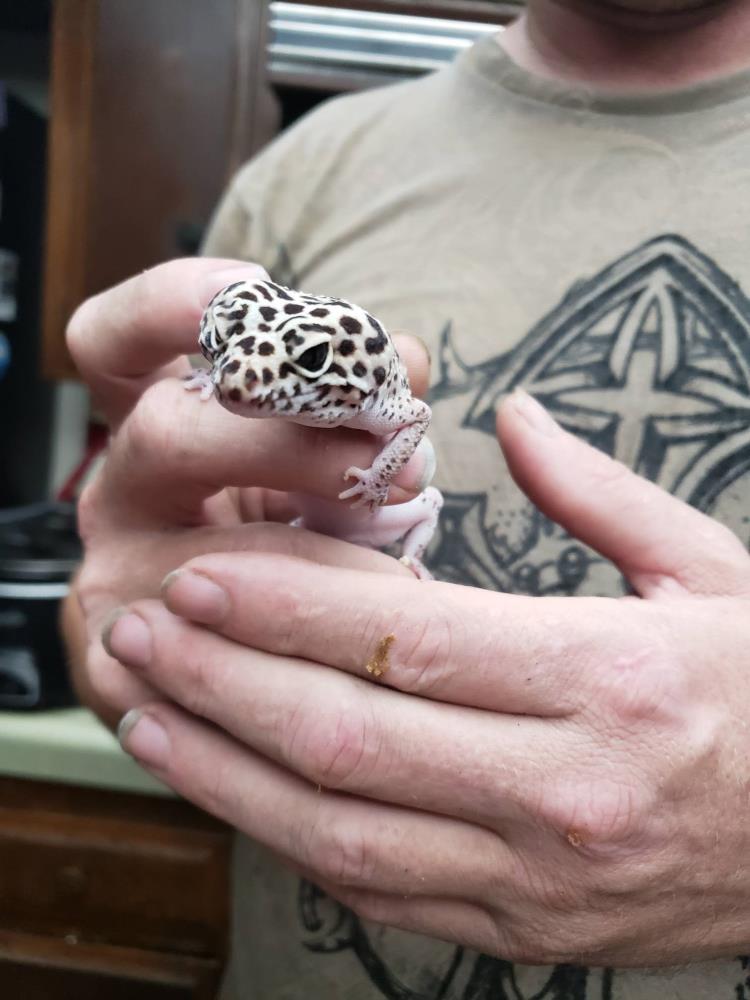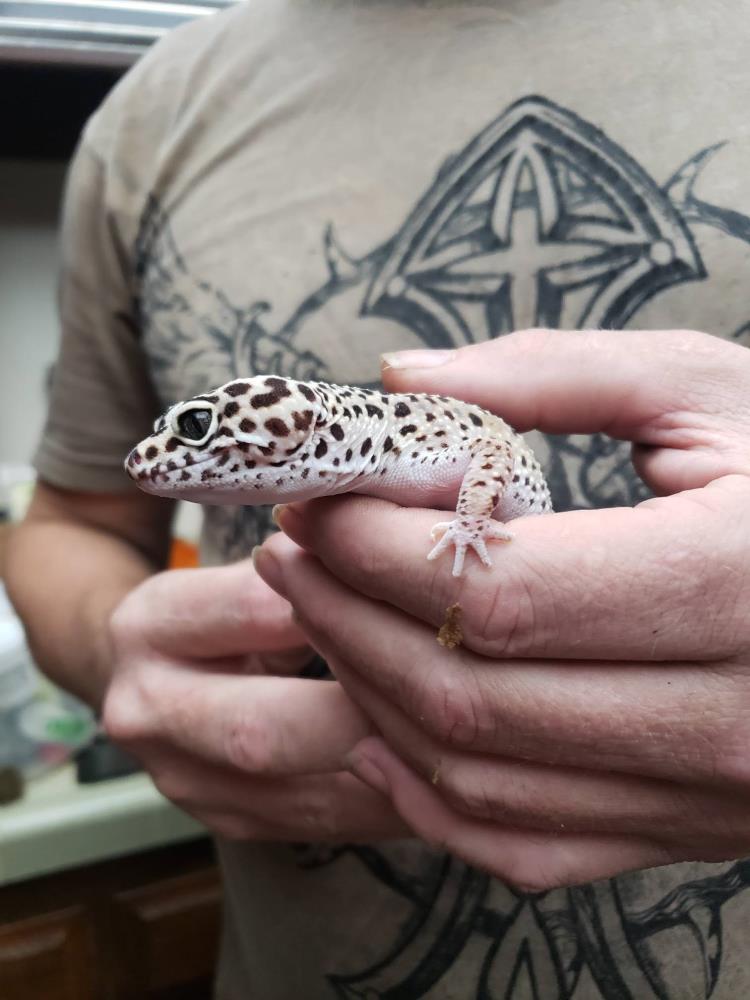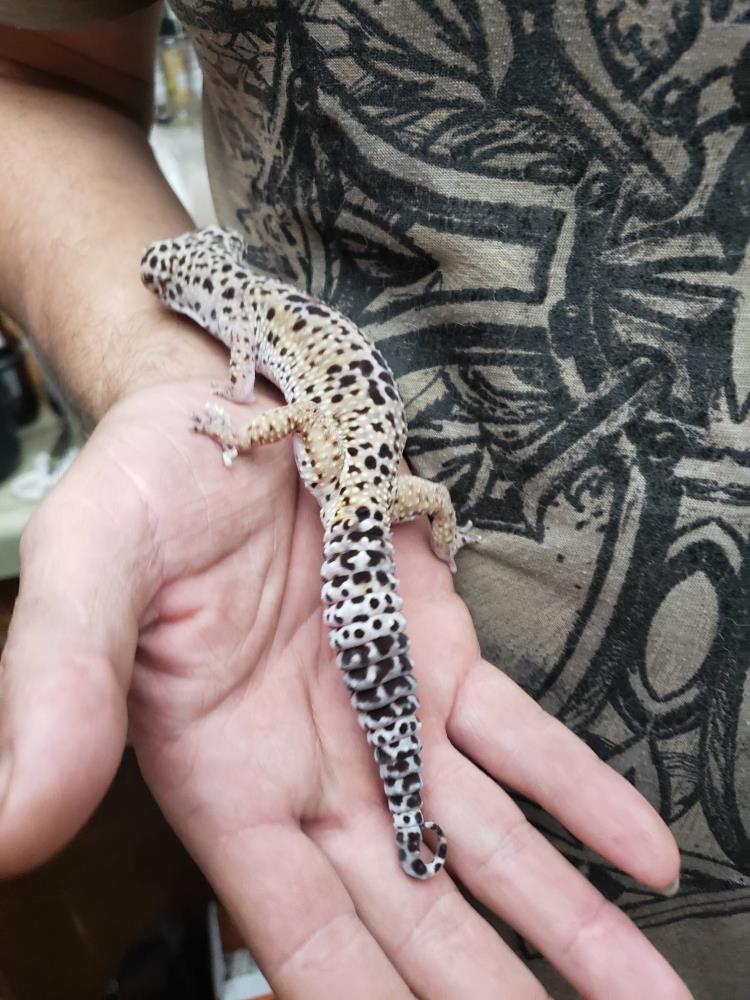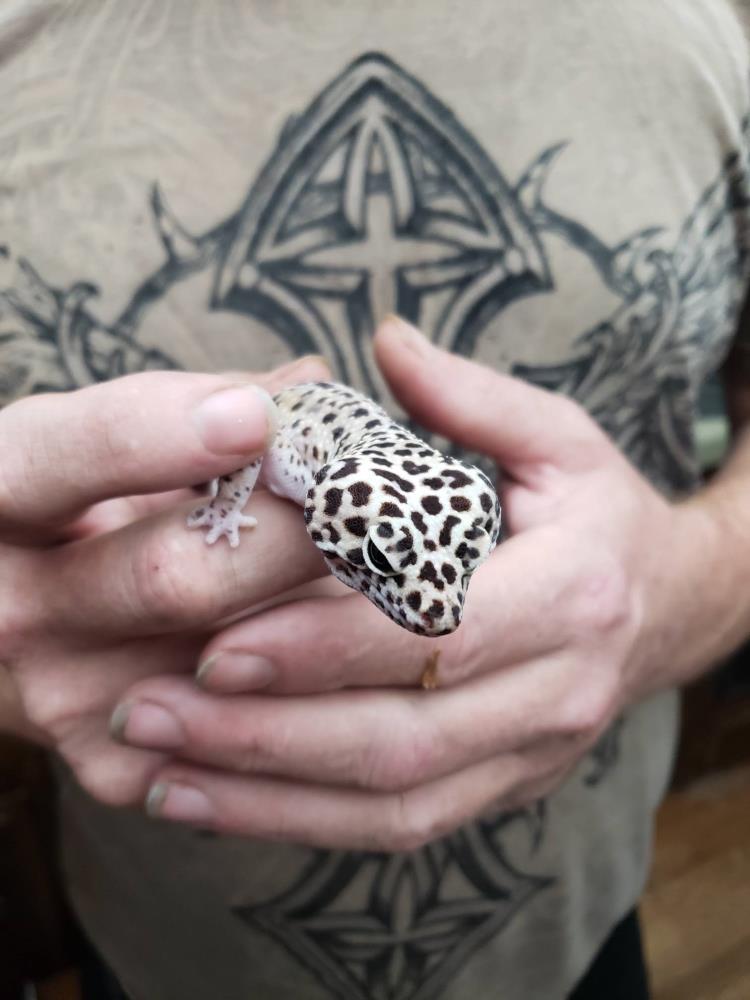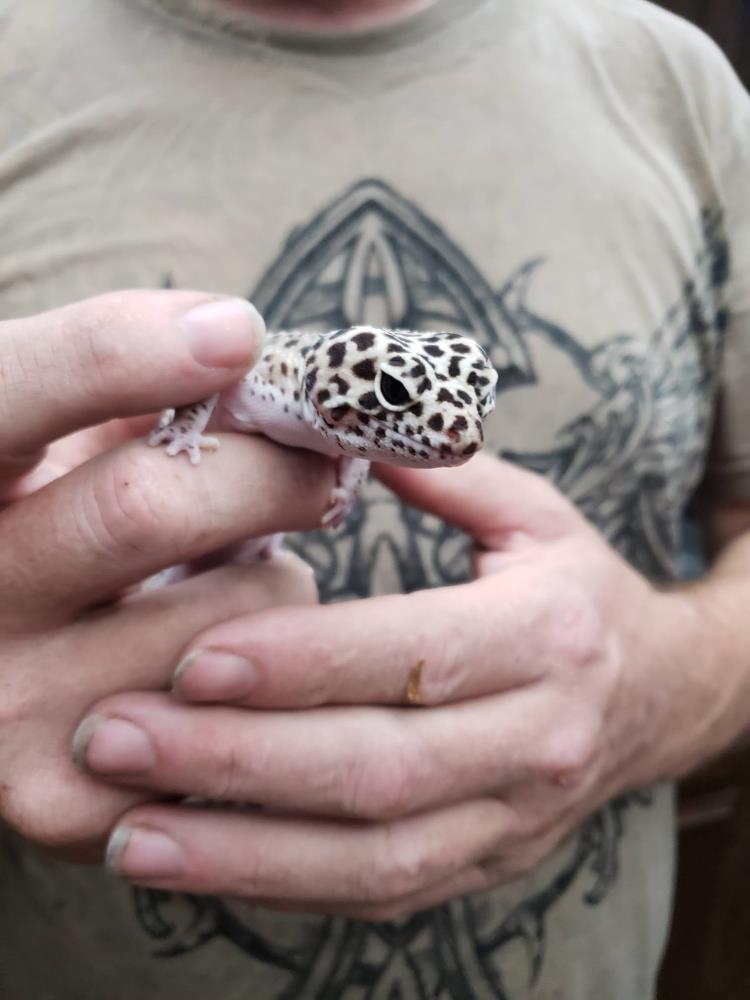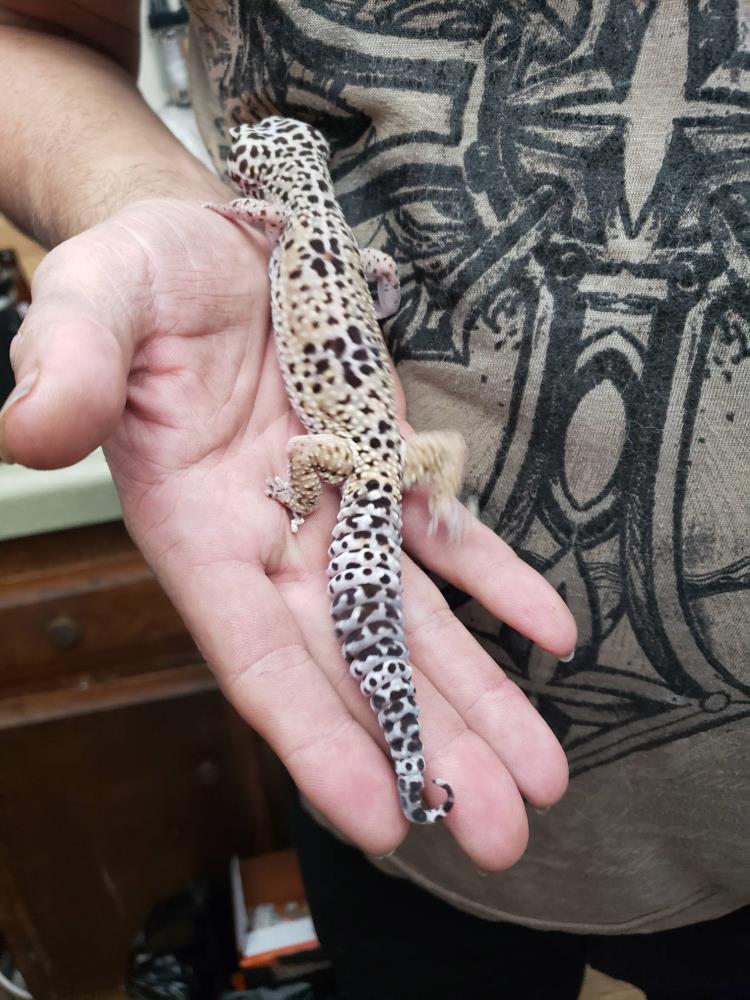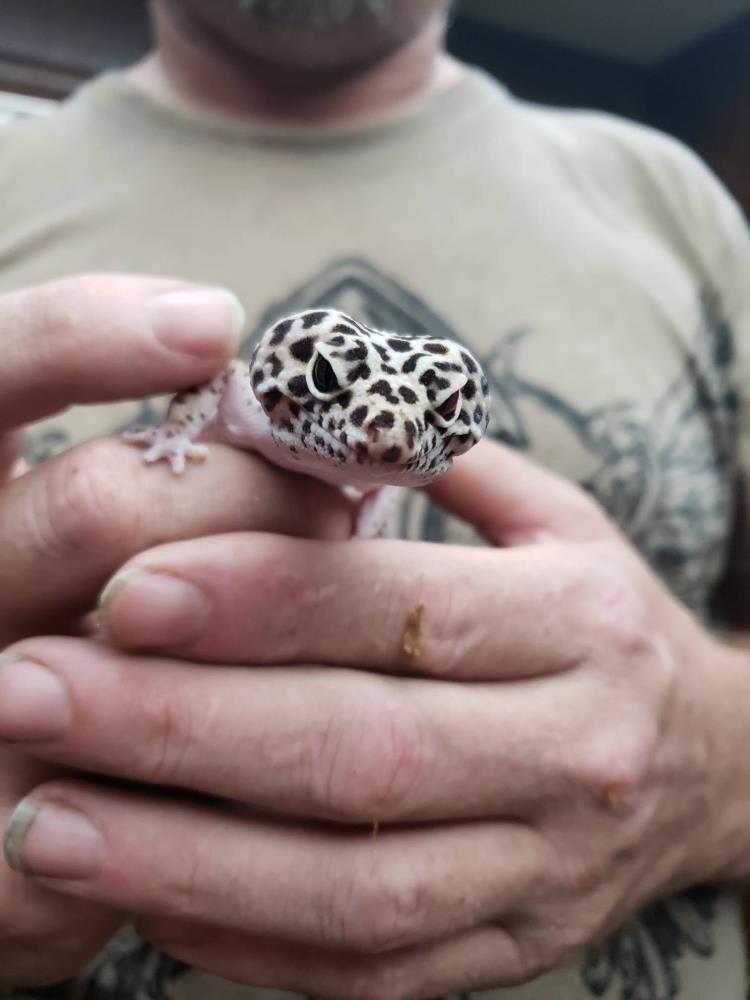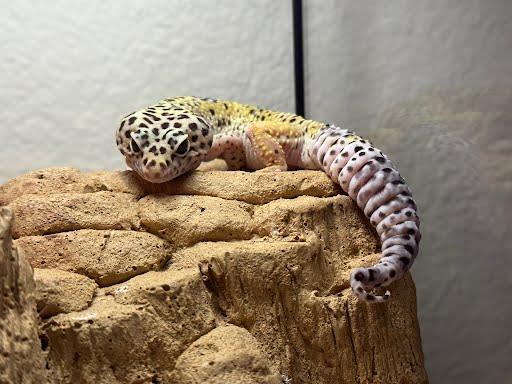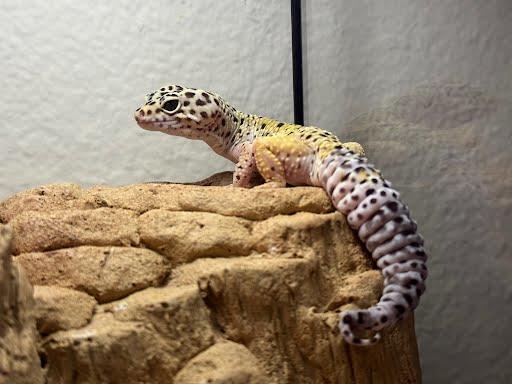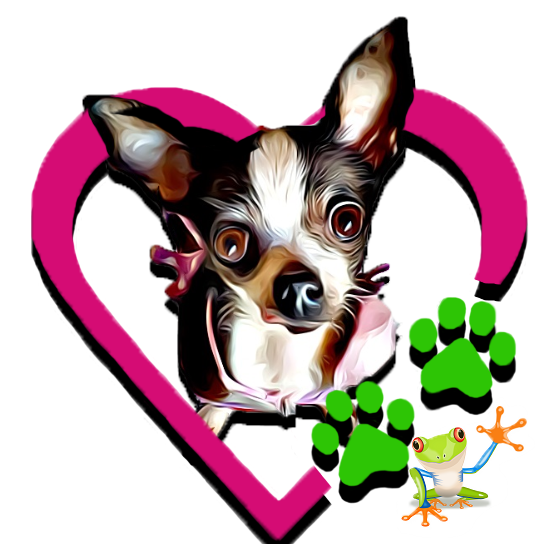

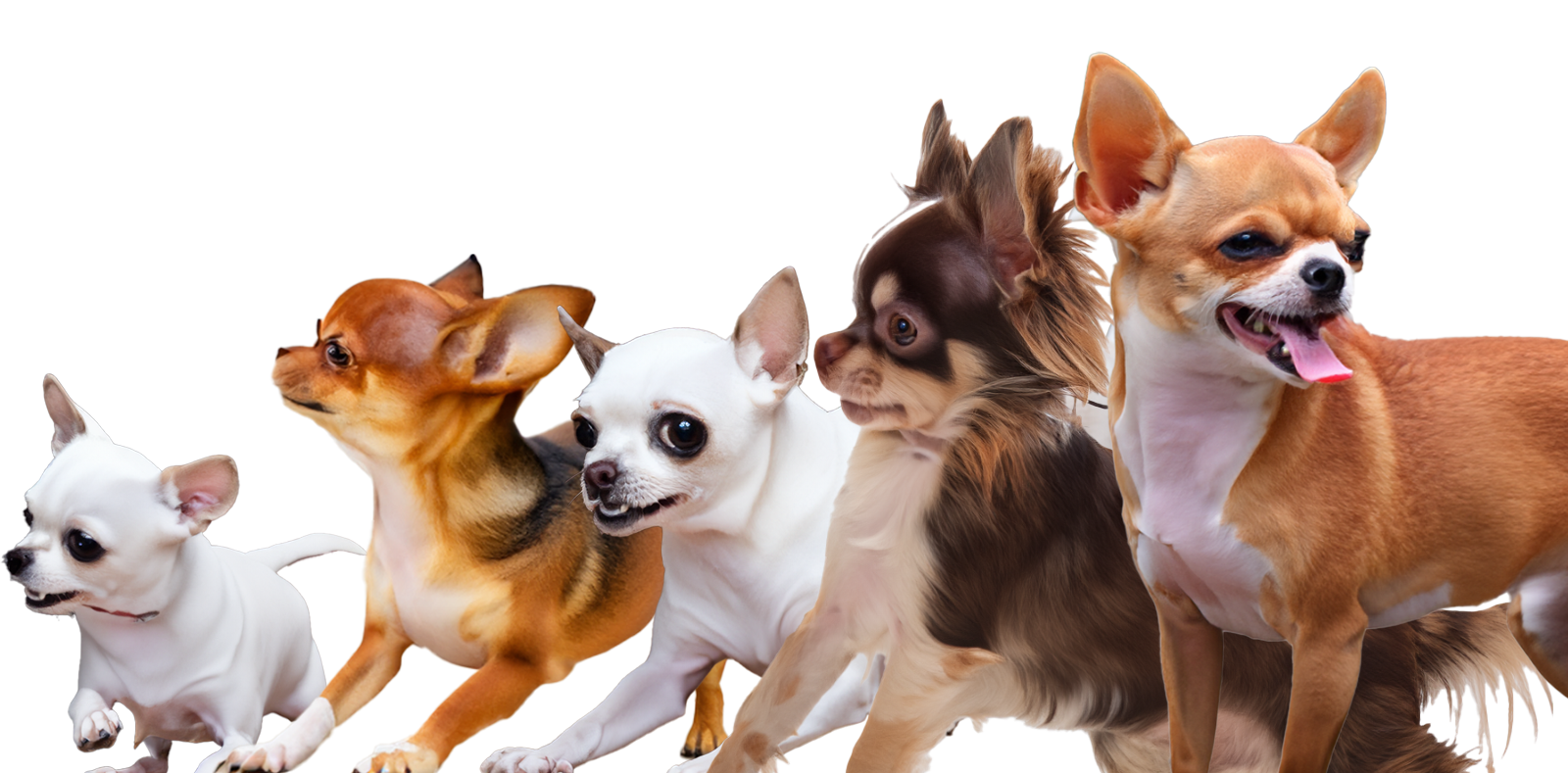
Adoption Details For Atta!
This animal is no longer available for adoption

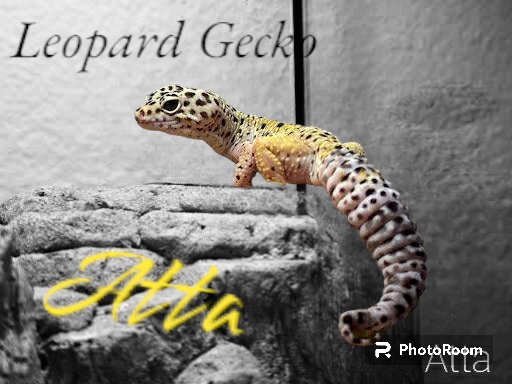
Name:
Atta
Animal Id:
8366
Date Created:
10/7/2022 9:44:21 PM
Age:
6 Year(s) 8 Month(s) Old
Type:
Lizard
Gender:
Undetermined
Primary Breed:
Leopard Gecko
Spayed / Neutered:
No
Secondary Breed:
Microchip:
Primary Color:
Black
Markings:
Secondary Color:
Yellow
Pattern:
Weight:
0 lbs
PENDING ADOPTION!!!
Hi! My name is Atta! One of my favorite movies is Antz and the name suits me with my ant-shaped head.
I am a very curious gecko who loves being part of the household, in the evenings of course. I enjoy watching what is going on especially if it looks like it's my mealtime!
My foster parent says ‘Every time I open the door to where Atta’s food dish is, s/he scurries out to watch me inquisitively. Atta is easy to remove and place back in his tank and s/he warms up to new people quickly. While s/he sleeps most of the time I see him, that little sleeping face is adorable. In my opinion, Atta is a very unique leopard gecko with a lot of personality and very interactive.’
My foster family has cats. All homes with cats must ensure that the cats cannot get to me as I look like a fun toy or treat to them. I personally like to watch them from afar but I run and hide if they see me.
As are most leopard geckos, I am quite soft and easy to handle, I like to explore, but I am also not very skittish usually. My foster fam says I am the best leopard gecko ever!
I eat well, I am about 20 cm long, my tail holds my reserves and is about 2cm wide and I weigh about 2.5oz. I’m not a baby but I do still have quite a bit of room to grow. If cared for right, I can live up to 20 years and grow as long as 10 inches!
Unlike other geckos, I don’t have sticky fingers to climb up walls. I am fairly delicate but hardy, though if scared I can drop my tail. This means I lose my fat reserves. It will grow back but it's better if I never lose it in the first place. A fat tail means that I am healthy!
I am nocturnal so I like to eat and socialize in the evening with my people. I am also an insectivore, which means I love eating a variety of bugs! Most importantly, I need to be house all by myself. We do not cohabitate, even if another gecko is the opposite gender.
I may be a small lizard but I am a big commitment. I was surrendered to the shelter because my previous family could not provide the adequate vet care that I needed. Later I was transferred to the rescue to finish my rehabilitation (I am happy and healthy now) and to help me find my forever home. Could it be with you?
If you think we may be a good match, or you would like to get to know me better, please click the Adoption Application button below and an adoption counselor will reach back out to you!
PLEASE NOTE:
1- We can only accept applications from interested parties who are in or near San Diego County, California at this time.
2- We do not ship reptiles but we may be willing to work with you if you are willing to travel if you are still in Southern California.
3- #2 will depend on the animal that you are applying for and is at the discretion of the board of directors.
Hi! My name is Atta! One of my favorite movies is Antz and the name suits me with my ant-shaped head.
I am a very curious gecko who loves being part of the household, in the evenings of course. I enjoy watching what is going on especially if it looks like it's my mealtime!
My foster parent says ‘Every time I open the door to where Atta’s food dish is, s/he scurries out to watch me inquisitively. Atta is easy to remove and place back in his tank and s/he warms up to new people quickly. While s/he sleeps most of the time I see him, that little sleeping face is adorable. In my opinion, Atta is a very unique leopard gecko with a lot of personality and very interactive.’
My foster family has cats. All homes with cats must ensure that the cats cannot get to me as I look like a fun toy or treat to them. I personally like to watch them from afar but I run and hide if they see me.
As are most leopard geckos, I am quite soft and easy to handle, I like to explore, but I am also not very skittish usually. My foster fam says I am the best leopard gecko ever!
I eat well, I am about 20 cm long, my tail holds my reserves and is about 2cm wide and I weigh about 2.5oz. I’m not a baby but I do still have quite a bit of room to grow. If cared for right, I can live up to 20 years and grow as long as 10 inches!
Unlike other geckos, I don’t have sticky fingers to climb up walls. I am fairly delicate but hardy, though if scared I can drop my tail. This means I lose my fat reserves. It will grow back but it's better if I never lose it in the first place. A fat tail means that I am healthy!
I am nocturnal so I like to eat and socialize in the evening with my people. I am also an insectivore, which means I love eating a variety of bugs! Most importantly, I need to be house all by myself. We do not cohabitate, even if another gecko is the opposite gender.
I may be a small lizard but I am a big commitment. I was surrendered to the shelter because my previous family could not provide the adequate vet care that I needed. Later I was transferred to the rescue to finish my rehabilitation (I am happy and healthy now) and to help me find my forever home. Could it be with you?
If you think we may be a good match, or you would like to get to know me better, please click the Adoption Application button below and an adoption counselor will reach back out to you!
PLEASE NOTE:
1- We can only accept applications from interested parties who are in or near San Diego County, California at this time.
2- We do not ship reptiles but we may be willing to work with you if you are willing to travel if you are still in Southern California.
3- #2 will depend on the animal that you are applying for and is at the discretion of the board of directors.
Quick Reference Guide
Animal Type
Lizard
Breed
Leopard Gecko
Introduction
Leopard geckos are a crepuscular, ground-dwelling lizard native to semi-desert and arid grassland areas of Afghanistan, Pakistan, India, and Nepal. They are 7-10″ (17-25 cm) long, with females generally being smaller. In captivity leopard geckos are known to live long lives: 15-20 years on average.
Difficulty
Beginner
Difficulty Notes
Basking Temp
94-97
Ambient Temp
90-92
Lowest Temp
70-77
Temp Notes
Diet
Insectivore
Diet Notes
UVA Intensity
Desert
UVB Intensity
Low/Occasional
Ferguson Zone
1
Lighting Notes
A typical leopard gecko does best with a fergusson zone of 0.5 – 1.5 however albinos should be limited to 0.5 – 0.7.
Enclosure Size
Medium Terrestrial
Enclosure Notes
A low flat enclosure with lots of ground space to roam is best. Enclosures of 36" wide by 18 inches deep and 12 inces high are a good a readily availalbe starting size.
Substrate
Sand/Soil Mix
Substrate Notes
Dry substrates that wont hold on to too much humidity is preferred. never use calcium sand or any sand that has dyes.
Humidity
Low (0-30%)
Humidity Notes
Leopard geckos should have an ambient hunmidity of 30-40% but also access to a humid hide of 70-80% so that they can self regulate. This is especially important to promote good shedding.
Animal Reference Material:
| Category | Title | AnimalType | Breed | |
|---|---|---|---|---|
| Animal Care | *SBRSC Leopard Gecko Information Guide for Adoption | Lizard | Leopard Gecko | |
| Animal Care | Leopard Gecko Care: Housing, Feeding and Handling | Lizard | Leopard Gecko | |
| Animal Care | Lizard UVB Lighting: What you need to know! | Lizard | ||
| Blog | [VIDEO] Is a Leopard Gecko right for me? | Lizard | Leopard Gecko | |
| Blog | Custom Large Lizard Enclosure Considerations | Lizard |
This animal is no longer available for adoption

